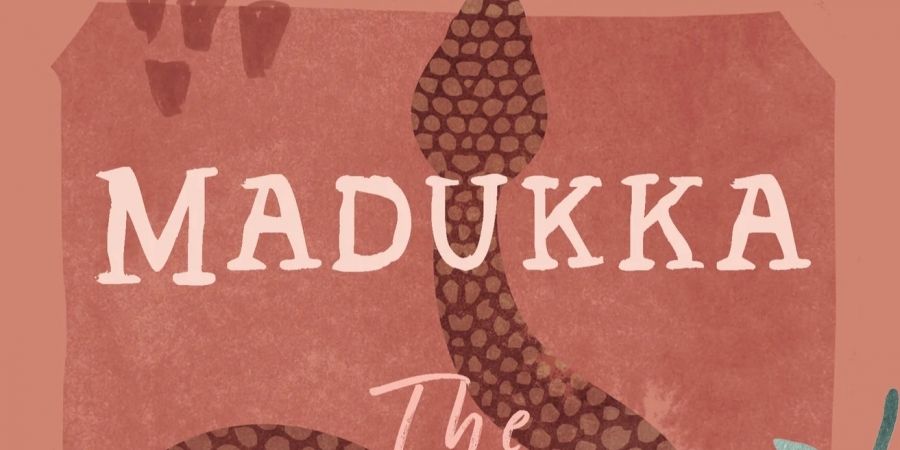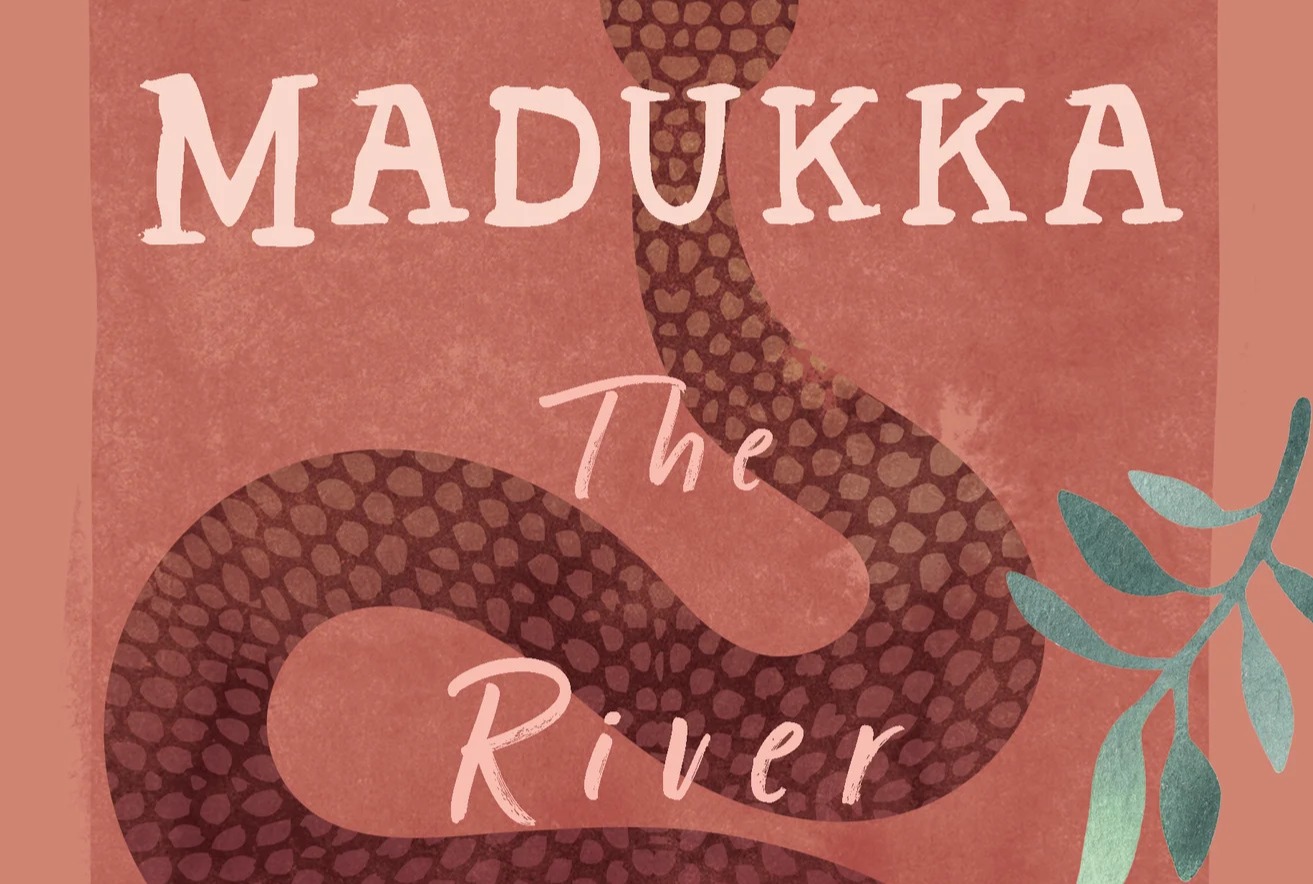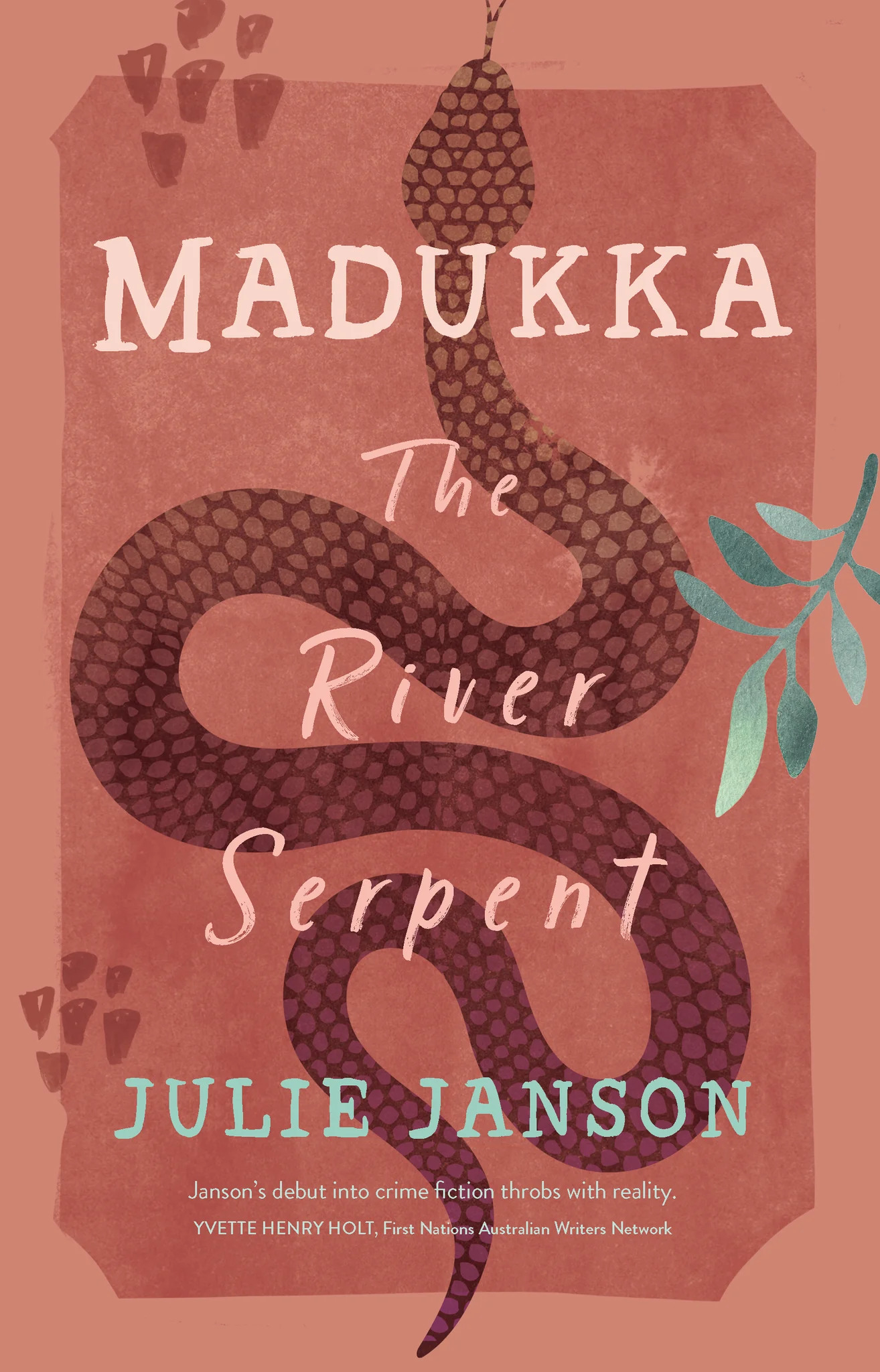
- Free Article: No
- Contents Category: Fiction
- Review Article: Yes
- Article Title: Close to the bone
- Article Subtitle: Julie Janson’s début novel
- Online Only: No
- Custom Highlight Text:
Given the huge popularity of crime fiction, some readers might wonder why there are not more examples by Aboriginal authors. Perhaps it is because crime in general is too close to the bone. It was only coincidental to be reviewing Julie Janson’s Madukka the River Serpent amid the controversy that followed the ABC’s coverage of the recent coronation, yet the relevance was inescapable. For the tiny number of readers unaware, this is when the slimy gutter of social media-fuelled racism dragged journalist Stan Grant down to the point where the national broadcaster lost one of its best (temporarily, one hopes). Grant’s departure speech at the end of his final Q&A on 21 May was so moving and thought-provoking it will stand in history alongside other landmark speeches – Paul Keating’s Redfern address springs to mind – and may well prove to be a catalyst for reform. Though prompted by cruelty and hate, it responded with generosity and love – love of people, love of culture, love of country.
- Featured Image (400px * 250px):

- Alt Tag (Featured Image): Debra Adelaide reviews 'Madukka the River Serpent' by Julie Janson
- Book 1 Title: Madukka the River Serpent
- Book 1 Biblio: UWA Publishing, $34.99 pb, 304 pp
- Book 1 Cover Small (400 x 600):

- Book 1 Cover (800 x 1200):

Set in dry Ngiyampaa country in western New South Wales, Madukka presents much that is familiar, but as bad as the political, environmental, and cultural battles over the parched Darling River are, these are just the start. Also in play are corruption and intimidation from a range of troublemakers, including cotton farmers, bikies, local politicians, neo-Nazi extremists, and police officers.
The protagonist is familiar, in terms of the genre, but also vulnerable and filled with self-doubt despite her external feistiness. June Thomas, a lone private investigator, has strong connections to place and family. These become a two-edged sword as she investigates a brutal crime that is emotionally as well as physically close to home – the disappearance and apparent murder of her environmental activist cousin. The other crime is the theft of a fundamental resource that has deprived the locals of everything but is far too huge for any entity to take on, let alone a newly minted PI. June has barely hung out her shingle when the attacks commence, the first being abuse from the local cop.
Colonial authoritarianism pervades the entire story. If a brutal white police officer seems clichéd, you only have to recall any of dozens of names. If the extent of water theft and sheer entitled greed seems exaggerated, consider the recent cases of Aboriginal aquaculture ventures seeking access to their own water. Such familiar facts are held close up to our noses, and the odour of their awful truth is inescapable.
The novel is strong on atmosphere and place, and passionate about its politics, with a cast of lively, witty, and often unpredictable characters. The plot is erratic and unfocused, but the central crime is as shocking as any imaginable, while the barren river is far more than a metaphor for a local community mourning multiple losses. June is a smart, confident operator who takes shit from no one, yet even she is thwarted at every turn of her investigations. She also surprises us, and sometimes herself, since she is not beyond flirting with a charming but ambiguous Murri, who may be implicated in dodgy business.
Stylistically and structurally, this is a messy novel. While the messiness can be alienating, it is also a reminder of the chaotic and complex circumstances that have led to the depletion of the river and its fish, and the replacement of its traditional custodians by organisations whose authority is unearned yet all powerful. If I felt a bit whacked over the head by the arbitrary scene shifts, the repetitive actions or events, and the tendency to over-explain, I also felt I needed provoking into questioning my own reading expectations, which, while welcoming discomfort, incline to the formally tidy.
Although one may itch to smooth things out editorially, Madukka confers a strong, almost hypnotic, effect, thanks to its cultural authority and its ferocious devotion to justice on several levels. The final third of the novel delivers a gear shift in pace and focus as the action escalates, reinforcing the horrific but familiar crimes against Indigenous people, and exposing yet again the cruel myth of ‘custody’ when white authorities are in charge. Satisfyingly violent, though, is the climax where the ‘rage and tumult’ of the mighty river serpent Madukka are finally unleashed.
It is particularly relevant when the crime genre is interrogated, played with, indeed messed with, from a First Nations perspective. Perhaps messiness should happen more often. Perhaps we simply need more fiction of this type by Indigenous authors, to pull us up short and never let us forget that the theft or vitiation of everything – country, family, language, story, and, of course, voice – is a colossal crime yet to face justice.


Comments powered by CComment